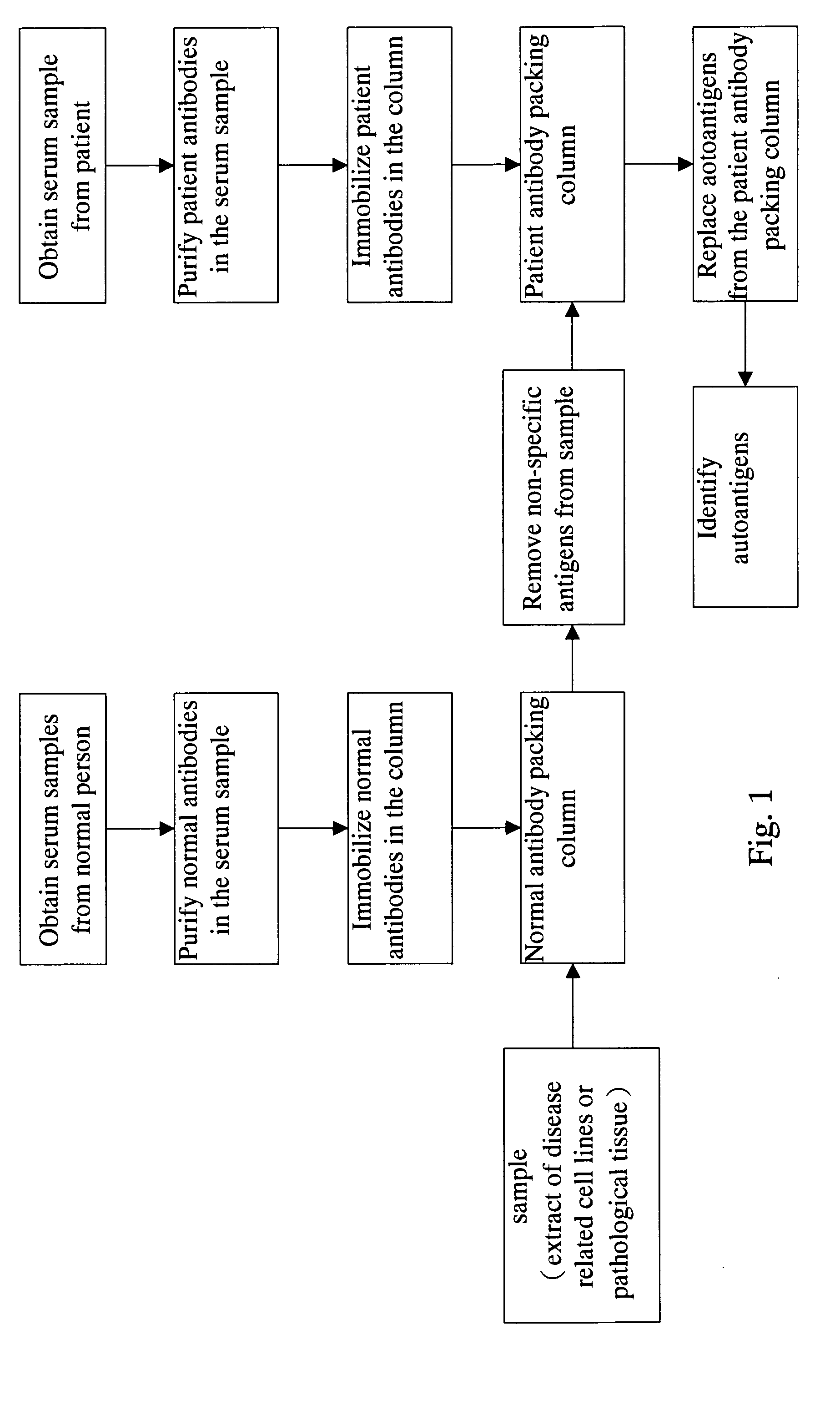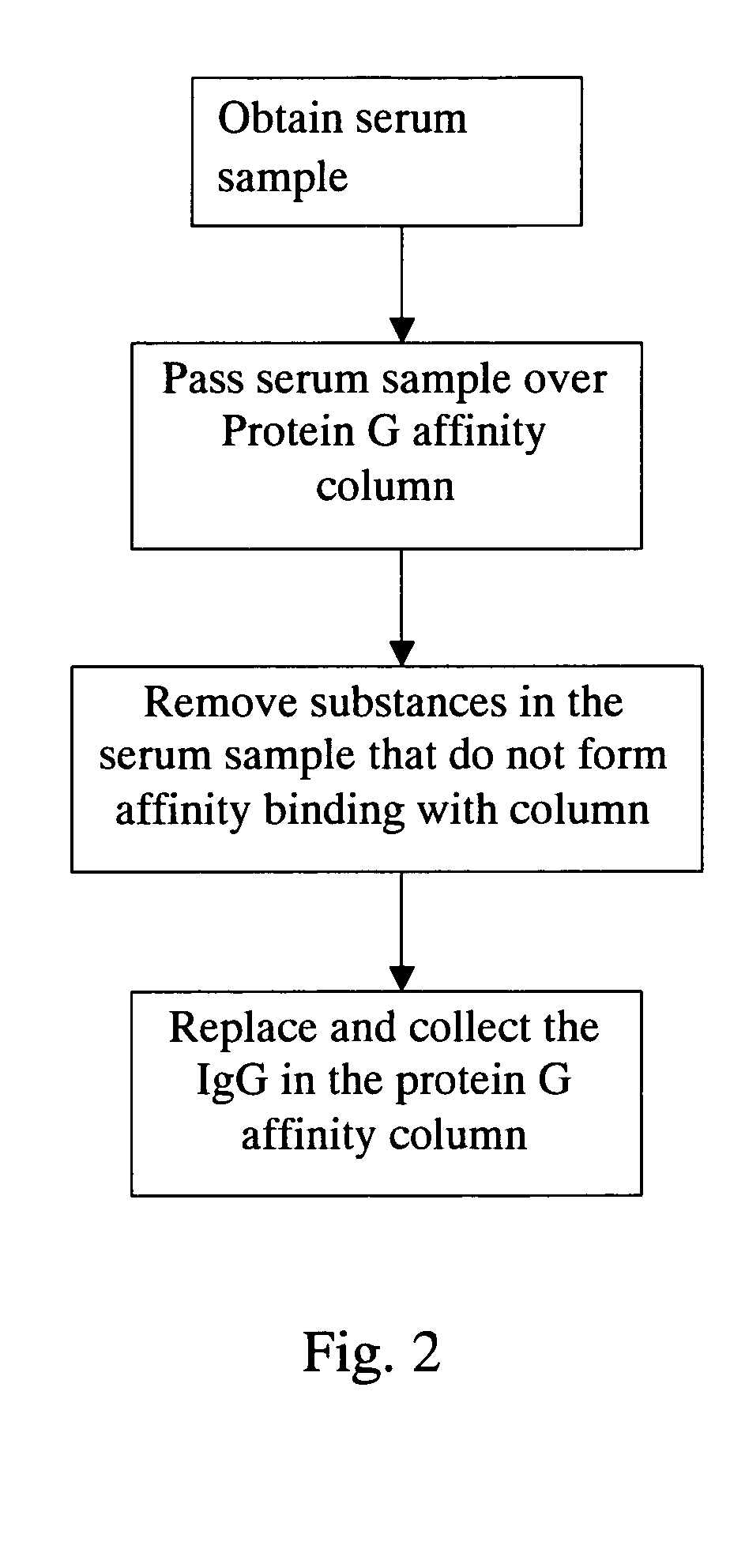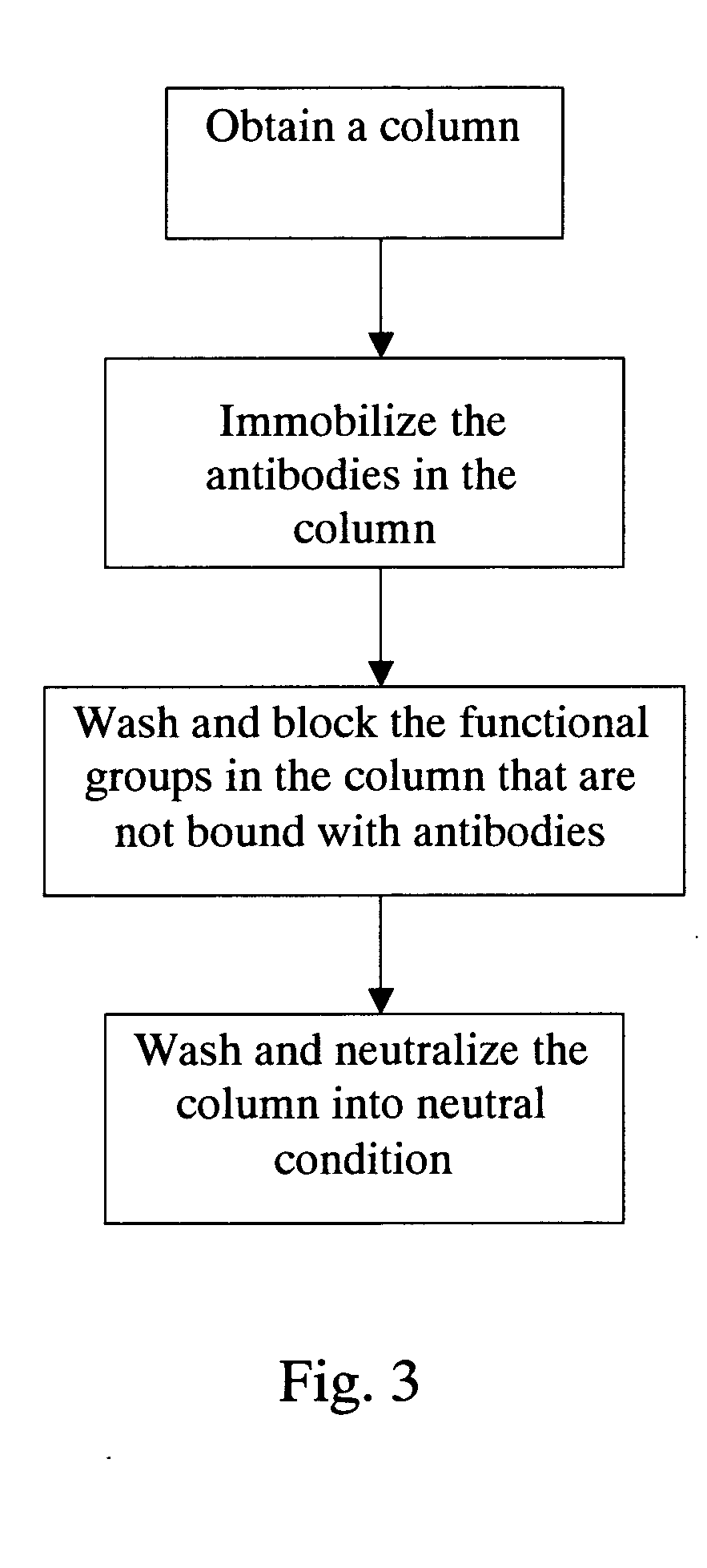Method for screening autoantigen
a technology of autoantigen and autoantibody, which is applied in the field of screening autoantibody, can solve the problems of reducing immunity, reducing immune activity, and prone to immune diseases of people with impaired immune functions, and achieves the effects of enhancing the chance of detecting autoantibody, enhancing the identification of specific autoantibody, and enhancing screening efficiency and speed
- Summary
- Abstract
- Description
- Claims
- Application Information
AI Technical Summary
Benefits of technology
Problems solved by technology
Method used
Image
Examples
example
Screening of Liver Cancer Autoantigen Using the Method According to the Present Invention
Purifying Autoantibodies in Sera
[0021] According to the steps of purifying autoantibodies in serum as shown in FIG. 2, dilute the serum with binding buffer (20 mM PBS, pH 7.0) at the ratio of 1:10, and then filter the diluted serum using 0.45 μm filter membrane to prevent the blockage of column in subsequent steps; next rinse Protein G affinity column with binding buffer ten times the column volume at the rate of 1 ml / min, and then pass the filtered serum sample over the Protein G affinity column at the rate of 0.2 ml / min to retain the antibodies in the column through affinity; rinse the Protein G affinity column again using binding buffer 5-10 times the column volume at the rate of 1 ml / min to remove substances in the serum sample that do not form affinity bonding with the column. Elute antibodies from the column using elution buffer (0.1 M Glycine-HCl, pH 2.7) 2-5 times the column volume at...
PUM
| Property | Measurement | Unit |
|---|---|---|
| pH | aaaaa | aaaaa |
| pH | aaaaa | aaaaa |
| pH | aaaaa | aaaaa |
Abstract
Description
Claims
Application Information
 Login to View More
Login to View More - R&D
- Intellectual Property
- Life Sciences
- Materials
- Tech Scout
- Unparalleled Data Quality
- Higher Quality Content
- 60% Fewer Hallucinations
Browse by: Latest US Patents, China's latest patents, Technical Efficacy Thesaurus, Application Domain, Technology Topic, Popular Technical Reports.
© 2025 PatSnap. All rights reserved.Legal|Privacy policy|Modern Slavery Act Transparency Statement|Sitemap|About US| Contact US: help@patsnap.com



